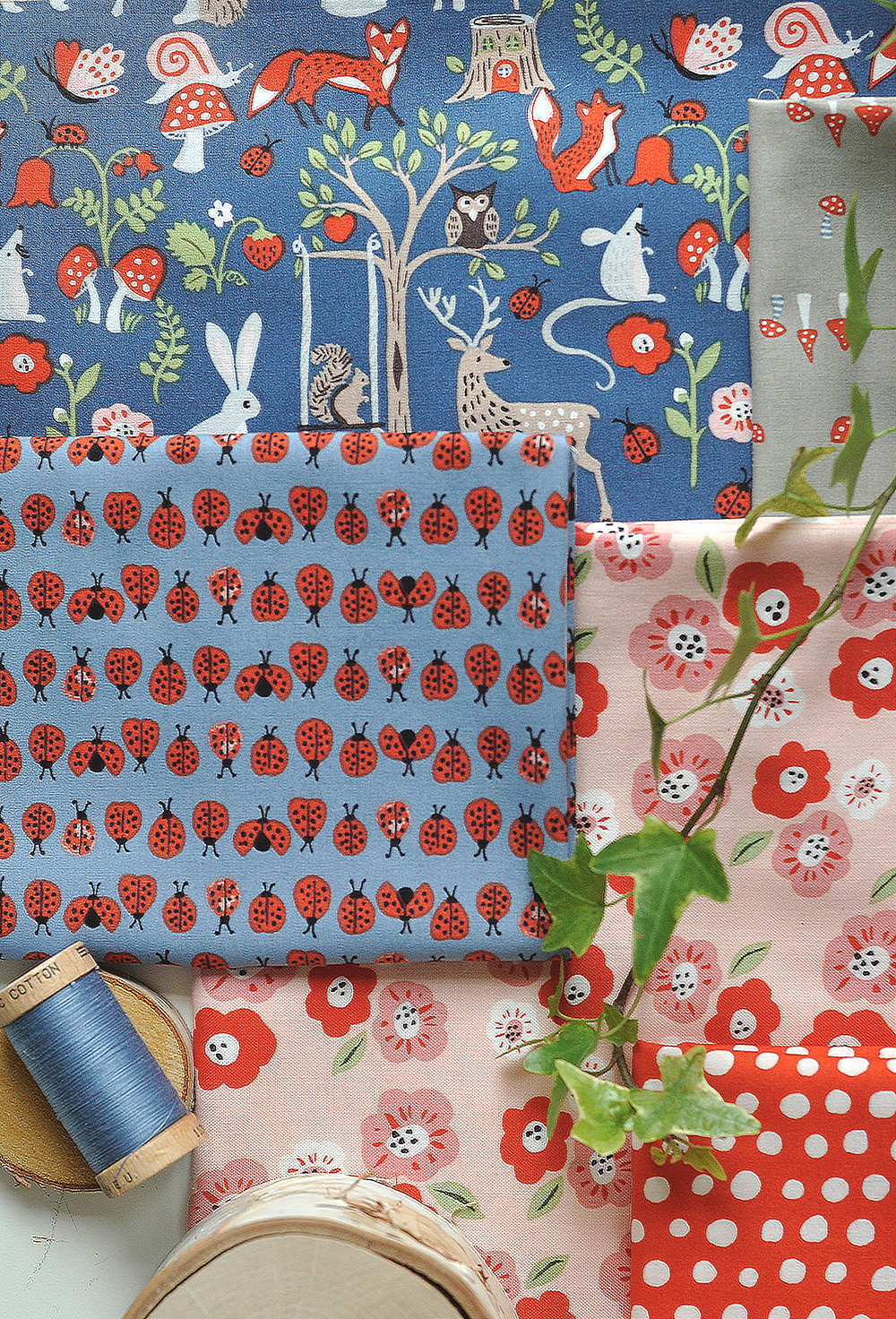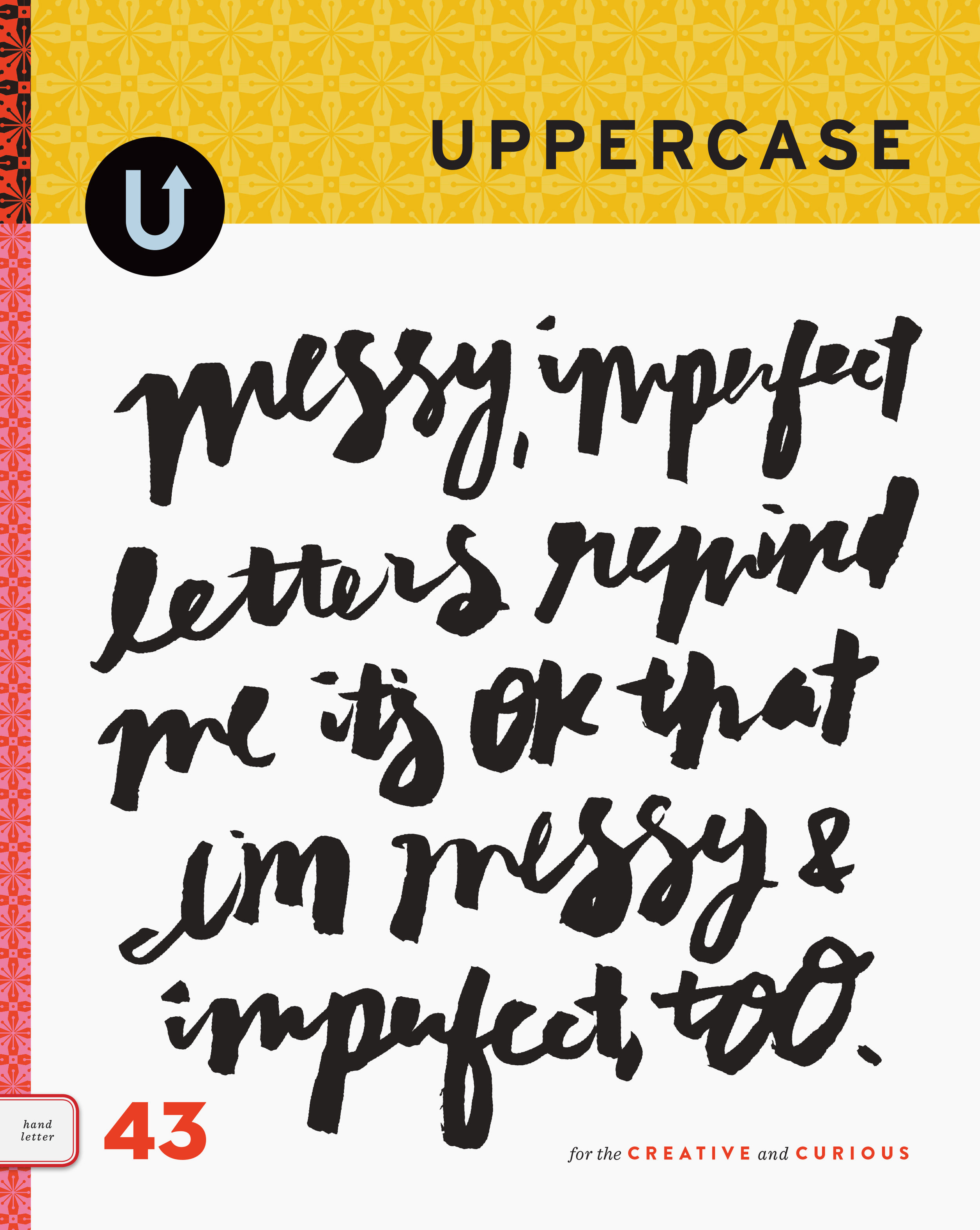Surface Pattern Design Guide: Jennifer Moore, Monaluna
/An illustrator starts her own organic fabric company
What is your background and training? How did you find your way to surface pattern design?
I loved art as a kid, but never really believed I would do it as a career. I have a clear memory of myself in a fourth-grade art class, working on a lush purple-and-blue mandala, and wondering if I could figure out a way to do that for a job. I decided that was ridiculous—no one would ever pay anyone to draw pretty patterns—so I took a winding path to finally doing this as a career.
I studied anthropology in college and waited tables after college, with a plan of going back to school for social sciences. Before I did, though, the restaurant I was working at closed, and I decided I needed to find some sort of “real” job. I ended up working for a small toy company called Manhattan Toy. There I learned about toy design and a great deal about textiles, as well as coming to love the whole design process—from idea to finished product. After that, I freelanced for a while and focused a bit more on surface design, putting together a portfolio of artwork and product designs. That portfolio eventually got me a job working for Target, where, to my surprise, they actually did pay me to draw pretty patterns. In 2003 I moved to the Bay Area to work for Pottery Barn Kids, and a few years later I decided to finally focus on creating artwork and pattern designs under my own brand.
Your story as illustrator and surface pattern designer becomes quite unique at the point when you decided to start your own organic fabric company, Monaluna, in 2010. The leap seems like quite a big one! How did this come about?
In the years before I started Monaluna, I was licensing my artwork to other companies for use on fabric, but I was also learning a lot about the effects of conventional fabric production on the environment and on the social communities where the cotton is farmed and processed. I became committed to the idea that if I was going to contribute to the textile industry, I wanted to make sure that I did it in a way that was sustainable and eco-friendly. It turned out that was harder than I anticipated, and I finally came around to the idea that if I wanted to ensure that my artwork was used on sustainable products, I needed to develop them myself.
How has your company evolved since you started it? Is Monaluna what you first envisioned when you founded the company?
I wish I could say that I’d had a grand vision for my business when I first started it, but I was really just dipping my toe in the water. I knew I wanted to design beautiful fabrics that would provide a sustainable and non-toxic alternative for the market, and I wanted to be involved in the whole design process, which I didn’t really get to do when I was working for a large company or freelancing. I loved the idea of creating something that would inspire others to create their own projects, which is one of my favourite things about designing fabric, and I also loved the idea of being able to design fabrics for my own design ideas. When my first collection arrived, I had a three-week-old baby and a loose business plan to sell the fabrics over a year. Three months later, the fabric had sold out, and I knew there was enough interest to turn my little idea into a real business.
Since then, Monaluna has grown to include over 20 collections, new substrates, patterns and now our own little studio and storefront. I’ve found that running my own business lets me do so many of the things I enjoy doing—from design and photography to writing and working with my wonderful customers. I’m always thinking of new aspects that I want to add to the business, but I’ve been trying to take it slowly and let the business grow organically.
What is the process for a typical collection, from your design to the finished yardage?
I usually start with some little inspiration point—an image, a style or sometimes an object that inspires me. That sets the initial tone for the collection. Then I create a mood board of sketches and colours and visual inspiration that helps me keep the style cohesive and serves as a way to keep track of my ideas. Then I create the artwork. The media I use to create the art varies—sometimes it’s watercolour or gouache, or just a Sharpie, and occasionally I draw directly on the computer. Whatever form the designs take, they eventually get scanned into the computer, and I work in Photoshop to create repeats and change the colours and scale until the collection hangs together well.
Once I have it roughed out, my husband Dave and I will usually sit down with a glass of wine and finalize the collection. He has a good eye for design and an uncanny ability to predict what will sell well, and it’s helpful for me to have a fresh perspective. When it’s all tweaked and finalized, I send the finished files and specification sheets to the mill, where they engrave the screens and match the colours. Finally, they create a “strike off,” the proof that is sent back to me to approve the artwork and colour. The fabric goes into production and is printed in bulk. Shipping from the mill usually takes three weeks, so I always get a bit of yardage air-shipped so that the sewing can begin! I use this fabric to create garments for photo shoots or to send out for blog tours or press. Once the shipment finally arrives, we stock it in our warehouse and ship it out to our customers.
What emerging trends do you see in surface pattern design?
I am drawn to imperfect, handmade-looking patterns, and though I feel that trend has been around for a while, it seems to be gaining strength. Sometimes you see it in prints that are clearly hand-painted, or in naive, sketchy illustrations, or in prints that are made to look hand-screened. I’ve noticed a lot of patterns that celebrate other handwork, like needlepoint and embroidery, quilting and hand-dyeing. Also, hedgehogs are all the rage.
||| monaluna.com











